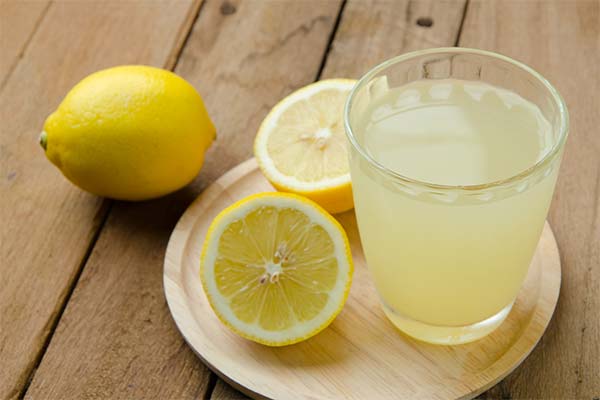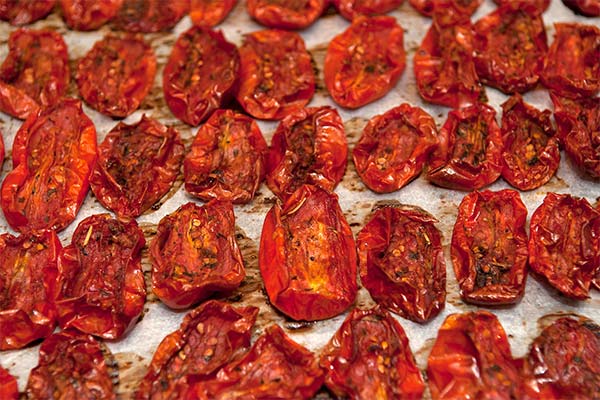Cooking is not without salt, which contains at least 97% sodium chloride. A distinction is made between rock salt, sea salt, lake salt and boiled salt. The latter is the most salty, the taste of natural rock salt is less intense, sea salt is enriched with minerals. In addition to these types, modified salt is used in cooking – wine salt, cherry salt, smoked salt.
Sodium chloride is involved in the transmission of nerve impulses, the production of hydrochloric acid, contractions of muscle tissue. The seasoning prolongs the shelf life of food, supports intracellular energy metabolism, regulates the movement of fluids in the circulatory and lymphatic systems.
Top 9 foods you can replace salt with
Excessive salt intake leads to calcium leaching, kidney disease, liver disease, development of hypertension and related long-term consequences. Proponents of a healthy lifestyle, reduce sodium chloride to a minimum, preferring healthy substitutes.
Lemon juice.

The point of using the alternative is to “clog” the receptors. The acid added to dishes makes them taste brighter, masks the lack of salt. The substitute is especially good in salad dressings, fish marinades.
In addition to enriching flavor, lemon juice increases the nutritional value of food by incorporating ascorbic acid.
Sun-dried tomatoes.

In addition to the natural sourness in the taste of the product of Mediterranean cuisine, you can feel the spicy sweet notes. Dried tomatoes are a source of vitamins C, K, PP, group B, beta carotene. The product is rich in potassium, magnesium, phosphorus, copper, manganese, iron and selenium.
Diet dried tomatoes are added to pasta, pizza, soups, omelets, salads, and casseroles. Due to the rich flavor of tomatoes, you can greatly reduce the salt content of a dish or eliminate it altogether.
Vinegar

Food will not be bland without sodium chloride if vinegar is introduced into salad dressings, sauces, prepared meat, fish dishes. Acid is added in minimal amounts, so as not to overshadow the taste of the main ingredients. You can use table vinegar, apple vinegar, wine vinegar, balsamic vinegar, rice vinegar.
The alternative is not suitable for people with gastritis, stomach ulcers, duodenal ulcers, reflux, and frequent heartburn.
Dry kelp.

Seaweed has a brackish taste and can replace sodium chloride. Kelp leaves are ground in a coffee grinder, the powder is sprinkled on ready meals. Brown algae has a high content of cobalamin, phylloquinone, tocopherol. The product is especially rich in iodine, iron, magnesium, potassium, copper, fluorine, and zinc.
Laminaria removes heavy metal salts, radionuclides, normalizes intestinal function, metabolism, and prevents cancer.
Celery

The salty taste of the leaves, stem, and root of the plant is due to the fact that all parts of celery absorb organic salt from the soil during vegetation. A useful celery root spice that replaces salt is gaining popularity. It is not difficult to make at home.
The root is peeled, cut into small pieces, and dried in the oven. After grinding, the powder is mixed with other spices or used as an independent seasoning. Inclusion of celery root in the diet is useful for people with hypertension, rheumatism, arthritis, arthrosis, tendency to edema, insomnia.
Dried vegetables.

The concentration of salt originally contained in raw vegetables, after they are chopped and dried in the oven increases several times. Heating slices of carrots, bell peppers at low temperatures preserves the vitamin and mineral composition.
If fresh vegetables in the first and second hot dishes are replaced by dried ones, you can do without sodium chloride and increase their nutritional value.
Spices, herbs

Large amounts of herbs, spices make dishes more healthy, convey their bright flavor, masking the absence of sodium chloride.
Make up for vitamin, macro- and micronutrient deficiencies and reduce salt intake with dill, parsley, sage, basil, onion feathers, rosemary, tarragon, paprika, oregano, cumin bay leaf, thyme, pepper. Store-bought spice kits often include salt. To be sure there is no salted spice, it is better to gather and dry the herbs and seeds yourself.
Dried Mushrooms.

Soups, salads, and hot dishes are seasoned instead of salt with dried mushrooms, whose spicy flavor intensifies with heat treatment. The flavor of the alternative is all the brighter and richer the finer the mushroom cubes or straws.
Garlic powder.

The pungent aroma, the taste of garlic reduces the salt intake in dishes. To avoid wasting time each time cleaning and chopping the vegetable, it is more convenient to use garlic powder. Sprinkle the spice on vegetable salads, cooked fries, food before frying, baking.
To make garlic powder:
- Separate the head into cloves. Remove the husks, cut into slices.
- Preheat the oven to 70-100°C.
- Line a baking tray with parchment. Spread the garlic plates, send to the oven.
- Dry, stirring occasionally, until the slices begin to crumble when lightly pressed.
- Put the garlic in a coffee grinder, blender bowl, or food processor. Grind, transfer to a tightly sealed container.
The flavor of the additive will be more varied if you combine the powder with paprika or ground chili.
How to reduce your salt intake

To keep useful sodium chloride from turning into a harmful condiment, take expert advice:
- Eliminate smoked foods, pickles, chips, bread crumbs, and salted fish from your diet.
- Prefer sea salt or Himalayan salt with minerals in it.
- Season already cooked meals with white powder.
- Eat less convenience foods, foods that have been processed industrially.
- To determine the sodium content of a product, study the composition, nutritional value on the label.
- Before you buy, read the composition of antacids, cough pills, hypertension pills, which in most 7) cases contain hidden sodium.
If salt is completely or partially replaced with other alternative foods, the receptors will adapt to them over time. Taste of familiar dishes will open up in a new way, risks of cardiovascular diseases will decrease.
The articles on this site are for information purposes only. The site administrators are not responsible for attempting to apply any recipe, advice or diet, nor do they guarantee that the information provided will help or harm you personally. Be cautious and always consult a doctor or nutritionist!
*All products recommended by thefirstdoc.com are selected by our editorial team. Some of our articles include affiliate links. If you buy something through one of these links, you help us earn a small commission from the seller and thus support the writing of useful and quality articles.




